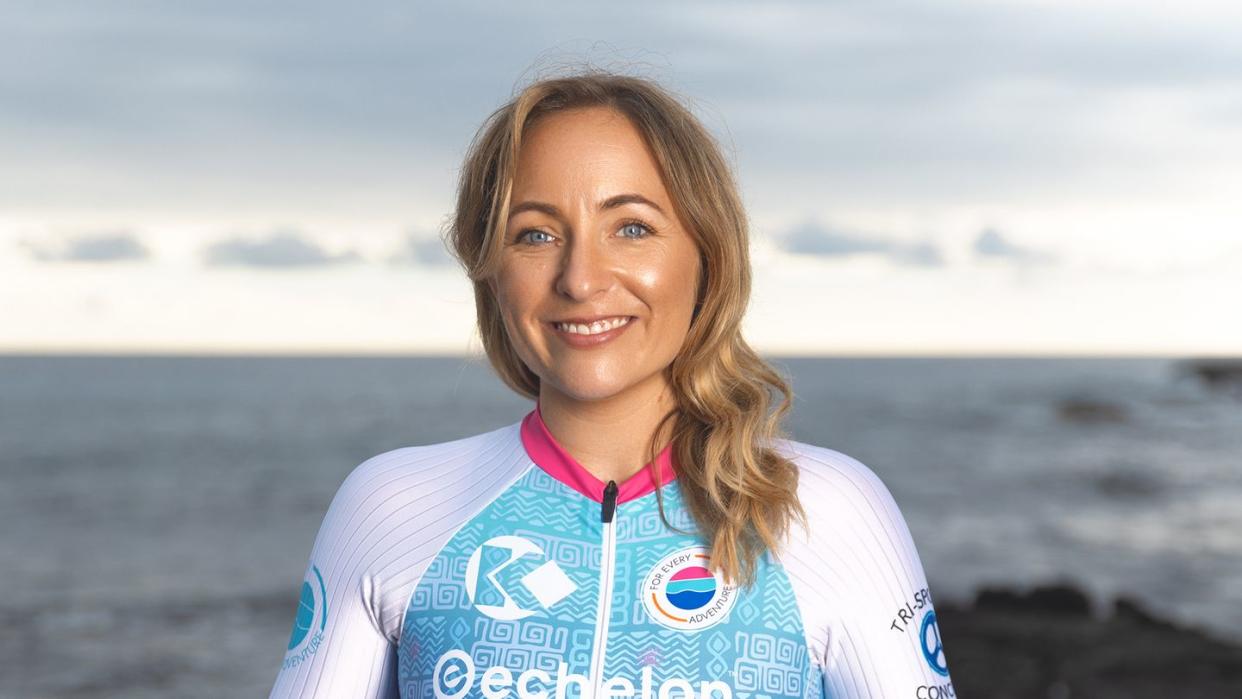This Cyclist Just Finished an Ironman, Showing She Won’t Let Epilepsy Slow Her Down

"Hearst Magazines and Yahoo may earn commission or revenue on some items through these links."
Name: Annie Brooks
Age: 39
Hometown: Loughborough, United Kingdom
Occupation: Marketer
Time Cycling: 10 years
Reason for Cycling: I got into triathlon, and the only way to do a triathlon is to cycle!
I got into cycling because of my husband: After he started doing triathlons, he encouraged me to enter my first race in 2014 to raise money for an epilepsy charity, as I was diagnosed with epilepsy in 2012 at the age of 28.
I experienced strange episodes and didn’t really understand what was happening. I’d have an intense deja vu feeling, and also an overwhelming fear like nothing else. Sometimes I’d lip smack, swallow a lot, or my hand would spontaneously open and close. I had what was called focal impaired awareness seizures.
With this kind of epilepsy, I was left feeling very confused with a lot of brain fog. Ultimately, a lack of epilepsy knowledge and not knowing how to tell people meant I went for years without a diagnosis. Doctors thought it was depression or panic attacks, but finally an EEG (a test that measures electrical activity in the brain) picked up my epilepsy.
While I was thankful to finally have a name for what I’d been suffering with, I was also in a bit of shock. I lost my driving license and was left feeling a bit lost. As a result, picking up triathlons was perfect for me because it gave me a new focus. It was like a brand-new chapter of my life, and I just went with it.
Since 2012, I’ve been on epilepsy medication which I’ll take for the rest of my life. It has helped, but I still have seizures.
When I started training in 2014, I was learning how to ride a road bike, and then how to race on it. I spent a good amount of time just working on bike confidence. With the help of my husband, who became my coach, we mixed up my training rides with leisurely fun rides. Ultimately, I never wanted cycling just to be something for training—I wanted to keep the enjoyment, too.
From there, I competed in some fun races. One of the more interesting triathlons I competed in was the Escape from Alcatraz Triathlon. It was incredible being able to cycle around closed roads in San Francisco. This is a unique set of distances: 1.5-mile swim, 18-mile bike, and an eight-mile run.
With the help of my triathlon coach, we work together on ensuring I get a good balance of training, rest, and recovery. Being overly-tired and stressed are two major triggers for me to have seizures, so finding the right training balance is important.
If I have a seizure, it’s a signal that I need to adjust my training to rest. At the end of the day, yes, it is frustrating that it happens, but getting upset doesn’t help. However, being flexible with my training allows me to still cycle in some way.
I recently completed the Ironman World Championships in Kona, Hawaii. My training until then had been centered around doing 112-miles with the heat and wind. With that race, I focused a lot on heat training, and as always, built my bike confidence. I’m so pleased I did specific race condition training because that is what got me to the finish line.
Cycling hasn’t been something I’ve immediately been good at or found easy, I’ve had to work at it. Some things take a bit more work than others, but it’s all part of the journey.
These tips have made my cycling journey a success:
1. Keep the fun element alive
Be sure to get those social or fun rides into your schedule. It’s easy to forget why you started and keep yourself motivated when it becomes just about training. I have a mountain bike and a gravel bike, for a variety of fun experiences. It’s been such a huge part of my life even though it entered later.
2. Make time to build confidence on the bike
Normalize riding your bike as much as possible. If you can’t do long rides all the time, add your bike into your daily routine. I might have looked daft riding my time trial bike for a coffee, but it certainly helped with my confidence.
3. Find the right environment
Be sure to seek out places you feel good and confident to ride. For example, country parks and closed road circuits allow you to concentrate on the job at hand.
4. Improve your bike knowledge
Always have some sort of bike mechanical knowledge. With two punctures in Kona, I had to change my inner tube well and fast. Whether you’re racing or just out for a Sunday ride, know your bike. With cycling there is always room for improvement, and always something to work on, but that, for me, is the enjoyment factor.
Annie’s Must-Have Gear
→ Supersapiens Glucose Monitor: I used Supersapiens during my training for Kona to monitor my glucose levels. I used it along with their energy band on the bike course during the race. This helped me keep on top of my nutrition throughout.
→ Oakley AR03 Helmet: I got this helmet to help keep me cool during my hot races as it is more ventilated. Absolute game changer for me!
→ Garmin 840 Edge: I always ride with a bike computer and this one from Garmin is compact but has all the bells and whistles. I also team it with the Garmin Varia for additional radar safety.
We want to hear how cycling changed you! Send your story and submit your photos to us via this web form. We’ll pick one each week to highlight on the site.
You Might Also Like

